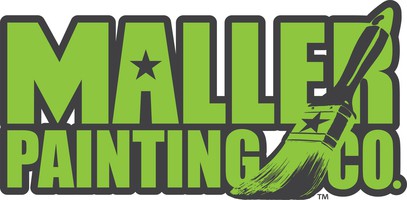
Residential Painting Sherwood, Oregon: Matt, Satin, Gloss, or Lacquered Paint?
May 6, 2020Interior Painting Sherwood, Oregon: Tips for Painting the Floor Skirting
May 20, 2020Exterior Painting Beaverton, Oregon: All about Planning
Although we strongly recommend that you hire a professional contractor to paint the exterior of your home, we respect your choice if you prefer to do it yourself.
In this case, here are some tips and tricks that will make your job easier through better planning.
Homeowners in Beaverton, Oregon, rely on paint to beautify and protect their homes. If you’ve decided to leverage the power of paint to enhance the exterior of your home, follow the preparation steps below to make your exterior paint project a success.
Planning
The ideal temperature for an exterior painting project is around 25 ° C (77°F) without humidity, but this is rarely the case. Here are our main weather tips:
• Prepare your project according to the weather – rain can easily spoil the paint you just applied and make you lose several hours of hard work. It is, therefore, essential to take into consideration the weather conditions to succeed in your exterior painting project.
• Avoid painting when the temperature is below 4.4 ° C (40 ° F).
• Always follow the directions on the paint label chosen for other advice on weather conditions.
TIP: Low temperatures and high humidity do not go well together. Usually, the higher the humidity, the longer it takes for the paint to dry.
Consider the time it takes to choose the paint, primer, finish, and applicators. Here are some tips to follow.
Paint
Most acrylic/latex paints will suit most surfaces commonly used for the exterior of a home, including wood siding, brick, fiber cement, stucco and EIFS (insulation system by exterior with thin coating).
As a general rule, resistance to UV rays – which prevents discoloration – is one of the main advantages of quality paint. In addition to sun protection, premium paints have excellent expansion and contraction characteristics, and resistance to rain, mold, and dirt build-up.
Acrylic or latex paints such as Aura ® outdoor from Benjamin Moore offers high filling power and is usually considered the best choices for exterior most painting projects.
Latex paints are resistant to sunlight and are highly compatible with all of the substrates mentioned above, so they don’t tend to discolor like oil-based paints.
Primer
Exterior primers vary depending on the substrate chosen. Your paint dealer can help you choose the one that suits your outdoor surface.
Finish
The quintessential exterior finishes are the low-gloss and satin finishes because they are more resistant to the accumulation of dirt compared to the more matte finishes. Many homeowners opt for a semi-gloss finish to achieve a sheen on woodwork, shutters, and moldings.
Tools
Brush or roller? At different points in your project, you may use both.
With a roller, your production time is increased; with a sprayer, your project can go faster.
The important thing is to use a quality applicator, whether you choose a brush or a roller.
Not all brushes and rollers are created equal, and results may vary, so we encourage you to use the best brushes and rollers to help you achieve your project.
Your paint dealer can help you make the right choice.
Using a sprayer requires a certain level of skill. We don’t recommend it to the average do-it-yourselfer.
Consult an Expert Painter
If you’re planning for exterior repainting in Beaverton, Oregon, our team at Maller Painting Company can help.
We have years of interior painting experience serving the areas of Beaverton, Sherwood, and Tigard, Oregon.
Our team can help you choose the best type of paint as well and paint colors at no extra cost.
To give us a try, book a FREE estimate below or call us on (503) 410-6366 if you have any questions.

Kevin began painting houses with his father’s company, C&K Painting, in 1996. His father taught him how to use a brush, roller, and caulk and clean a brush properly. He then worked for several other paint companies, where he learned how to spray oils, lacquers, and all water-based finishes. In 2012, after 15 years of experience, he decided to get licensed and start the Maller Painting Company. His team has focused on providing the best re-painting services to our residential clients in the Beaverton area.


